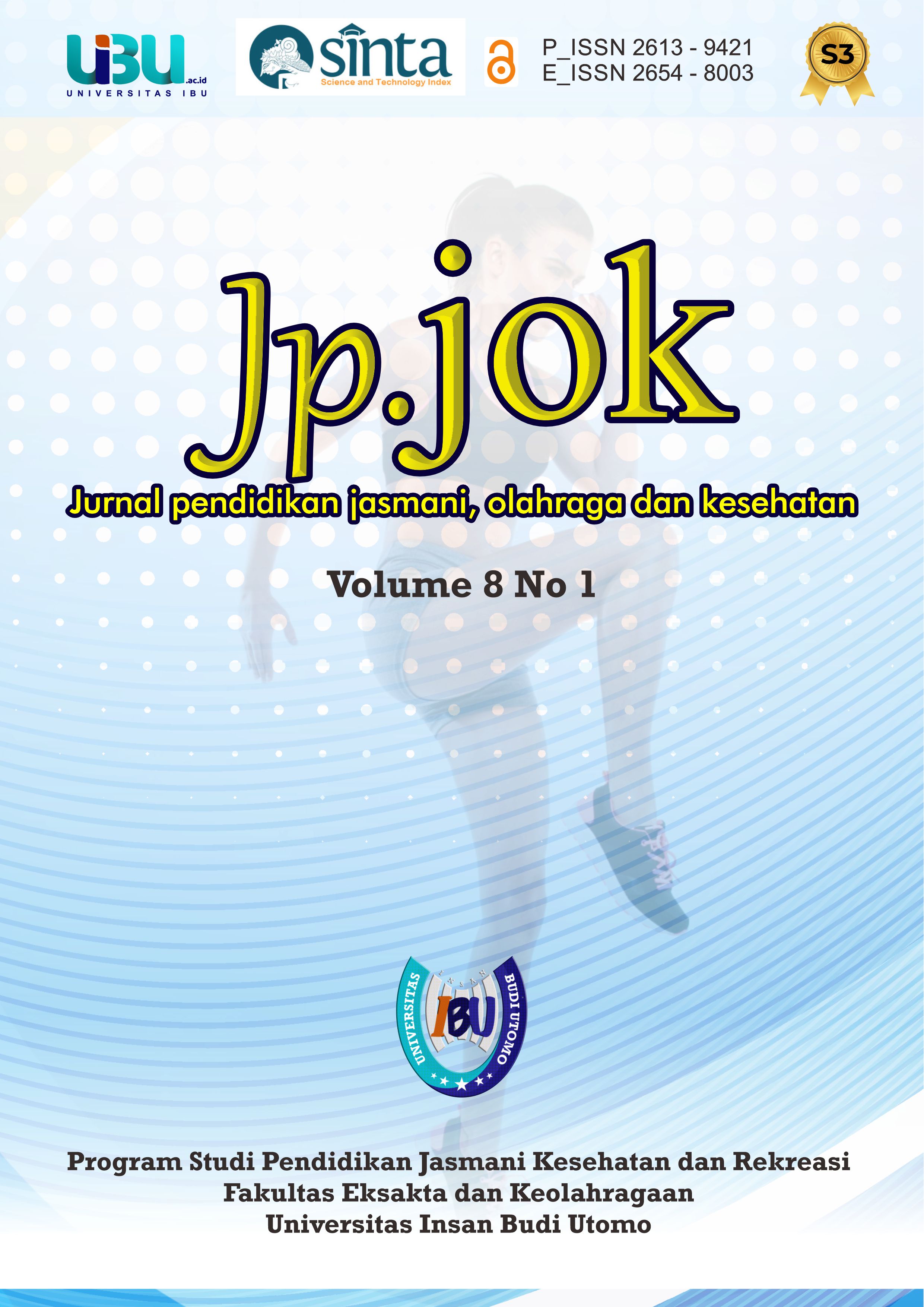Implementation of Children's Music-Based Rhythmic Gymnastics Learning Model to Improve Motor Coordination of Grade V Students of SDN Kertagena Tengah 4
DOI:
https://doi.org/10.33503/jp.jok.v8i1.1830Keywords:
Rhythmic Gymnastics, Children's Music, Motor CoordinationAbstract
Classroom Action Research aims to enhance the motor coordination of grade V students at SDN Kertagena Tengah 4 through the implementation of a music-based rhythmic gymnastics learning model for children. The background of the study is based on the low motor coordination ability of students (only 32% reached the initial competency standards) and the lack of variation in PJOK learning methods. This study employed the Kemmis and McTaggart model of the PTK approach, utilising two intervention cycles. Data were collected using the Gross Motor Development Checklist instrument (α = 0.85), the Rhythmic Movement Observation Rubric (content validity = 0.82), observations, interviews, and students' diaries. The results showed significant improvements in rhythmic accuracy (from 35% to 92%), postural control (from 28% to 88%), and active participation (from 44% to 90%). Additionally, qualitative data revealed an increase in learning motivation, self-confidence, and the use of natural peer tutoring. This research demonstrates the effectiveness of a multisensory approach (combining auditory, visual, and kinesthetic elements) in learning gymnastics. The results of this study have practical benefits for both teachers and schools in developing an innovative and student-centered PJOK curriculum.
References
Bailey, R. (2006). Physical education and sport in schools: A review of benefits and outcomes. Journal of School Health, 76(8), 397-401.
Bandura, A. (1986). Social foundations of thought and action: A social cognitive theory. Prentice-Hall.
Deci, E. L., & Ryan, R. M. (2000). The "what" and "why" of goal pursuits: Human needs and the self-determination of behavior. Psychological Inquiry, 11(4), 227-268.
Diamond, A. (2019). Executive functions. Annual Review of Psychology, 64, 135-168.
Gallahue, D. L., & Ozmun, J. C. (2006). Understanding motor development: Infants, children, adolescents, adults (6th ed.). McGraw-Hill.
Kemdikbud. (2021). Panduan implementasi kurikulum PJOK Merdeka Belajar. Kementerian Pendidikan dan Kebudayaan RI.
Lopes, V. P., et al. (2013). Motor coordination and academic achievement in primary school children. Journal of Science and Medicine in Sport, 16(1), 58-63.
Puspasari, R., & Suryadi, D. (2022). Hubungan Keterampilan Motorik dengan Prestasi Akademik Siswa Sekolah Dasar.Jurnal Pendidikan Jasmani Indonesia, 18(1), 45-58.
Schmidt, R. A. (1975). A schema theory of discrete motor skill learning. Psychological Review, 82(4), 225-260.
Simamora, R., et al. (2024). Rhythmic movement training for children: A meta-analysis of motor skill outcomes. Journal of Motor Behavior, 56(2), 145-160.
Smits-Engelsman, B., et al. (2018). Evaluating the evidence for motor-based interventions in developmental coordination disorder: A systematic review and meta-analysis. Research in Developmental Disabilities, 74, 72-102.
Thaut, M. H. (2015). Rhythm, music, and the brain: Scientific foundations and clinical applications. Routledge.
Thelen, E., & Smith, L. B. (1994). A dynamic systems approach to the development of cognition and action. MIT Press.
Tomlinson, C. A. (2017). How to differentiate instruction in academically diverse classrooms (3rd ed.). ASCD.
Ulrich, D. A. (2019). Test of gross motor development-3 (TGMD-3): Examiner's manual. Pro-Ed.
Vygotsky, L. S. (1978). Mind in society: The development of higher psychological processes. Harvard University Press.








